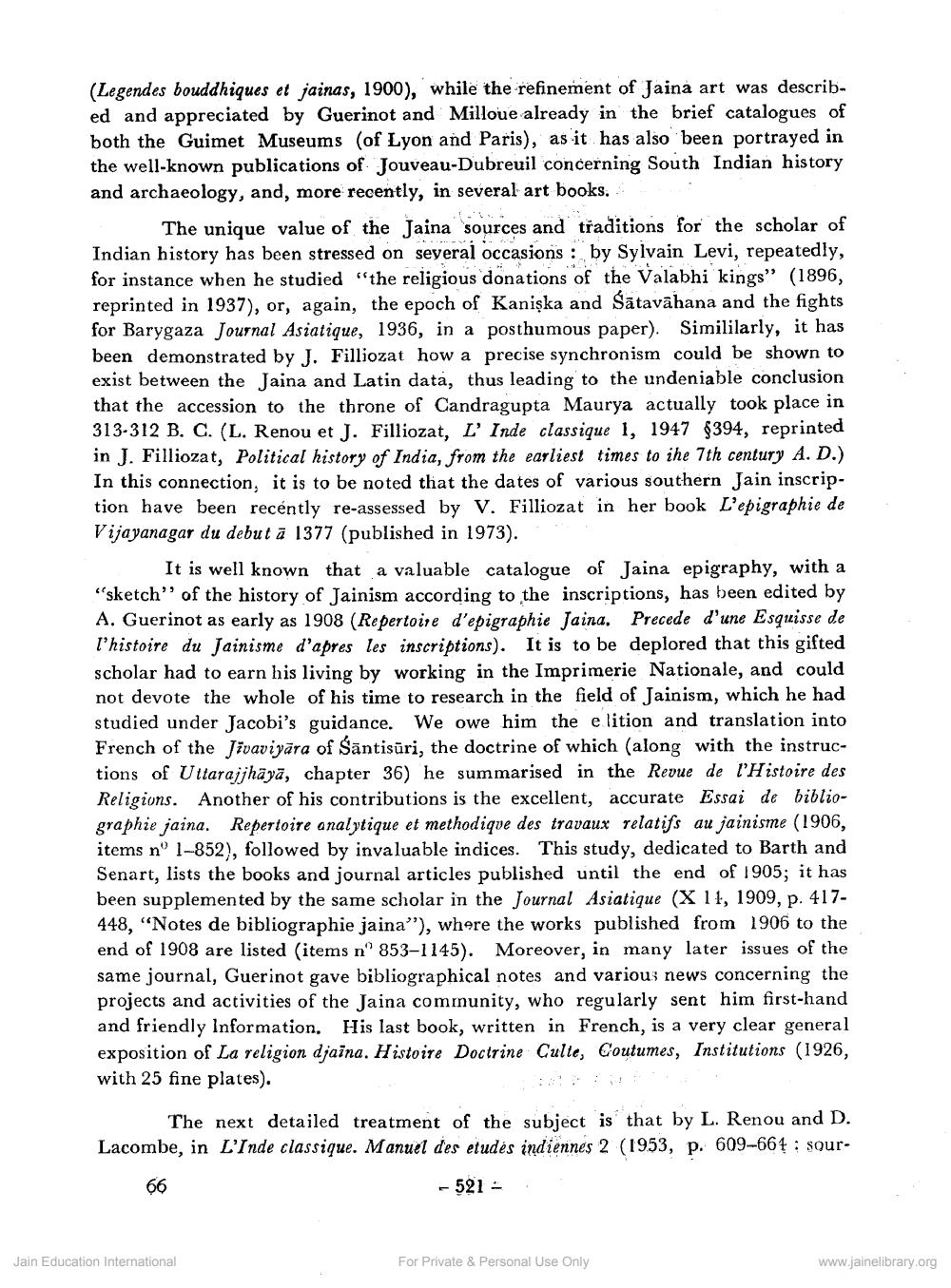Book Title: Jain Studies in France Author(s): Kole Kaile Publisher: Z_Kailashchandra_Shastri_Abhinandan_Granth_012048.pdf View full book textPage 2
________________ (Legendes bouddhiques et jainas, 1900), while the refinement of Jaina art was described and appreciated by Guerinot and Milloue already in the brief catalogues of both the Guimet Museums (of Lyon and Paris), as it has also been portrayed in the well-known publications of Jouveau-Dubreuil concerning South Indian history and archaeology, and, more recently, in several art books. The unique value of the Jaina sources and traditions for the scholar of Indian history has been stressed on several occasions : by Sylvain Levi, repeatedly, for instance when he studied "the religious donations of the Valabhi kings" (1896, reprinted in 1937), or, again, the epoch of Kanişka and Sātavāhana and the fights for Barygaza Journal Asiatique, 1936, in a posthumous paper). Simililarly, it has been demonstrated by J. Filliozat how a precise synchronism could be shown to exist between the Jaina and Latin data, thus leading to the undeniable conclusion that the accession to the throne of Candragupta Maurya actually took place in 313-312 B. C. (L. Renou et J. Filliozat, L'Inde classique 1, 1947 $394, reprinted in J. Filliozat, Political history of India, from the earliest times to ihe 7th century A. D.) In this connection, it is to be noted that the dates of various southern Jain inscription have been recently re-assessed by V. Filliozat in her book L'epigraphie de Vijayanagar du debut à 1377 (published in 1973). It is well known that a valuable catalogue of Jaina epigraphy, with a "sketch" of the history of Jainism according to the inscriptions, has been edited by A. Guerinot as early as 1908 (Repertoire d'epigraphie Jaina. Precede d'une Esquisse de l'histoire du Jainisme d'apres les inscriptions). It is to be deplored that this gifted scholar had to earn his living by working in the Imprimerie Nationale, and could not devote the whole of his time to research in the field of Jainism, which he had studied under Jacobi's guidance. We owe him the elition and translation into French of the Jūvaviyāra of Säntisūri, the doctrine of which (along with the instructions of Uttarajjhāyā, chapter 36) he summarised in the Revue de l'Histoire des Religions. Another of his contributions is the excellent, accurate Essai de bibliographie jaina. Repertoire analytique et methodique des travaux relatifs au jainisme (1906, items no 1-852), followed by invaluable indices. This study, dedicated to Barth and Senart, lists the books and journal articles published until the end of 1905; it has been supplemented by the same scholar in the Journal Asiatique (X 11, 1909, p. 417448, "Notes de bibliographie jaina"), where the works published from 1906 to the end of 1908 are listed (items no 853–1145). Moreover, in many later issues of the same journal, Guerinot gave bibliographical notes and various news concerning the projects and activities of the Jaina community, who regularly sent him first-hand and friendly Information. His last book, written in French, is a very clear general exposition of La religion djaina. Histoire Doctrine Culte, Coutumes, Institutions (1926, with 25 fine plates). The next detailed treatment of the subject is that by L. Renou and D. Lacombe, in L'Inde classique. Manuel des etudés indiennes 2 (1953, p. 609-664 : sour 66 - 521 - Jain Education International For Private & Personal Use Only www.jainelibrary.orgPage Navigation
1 2 3 4
